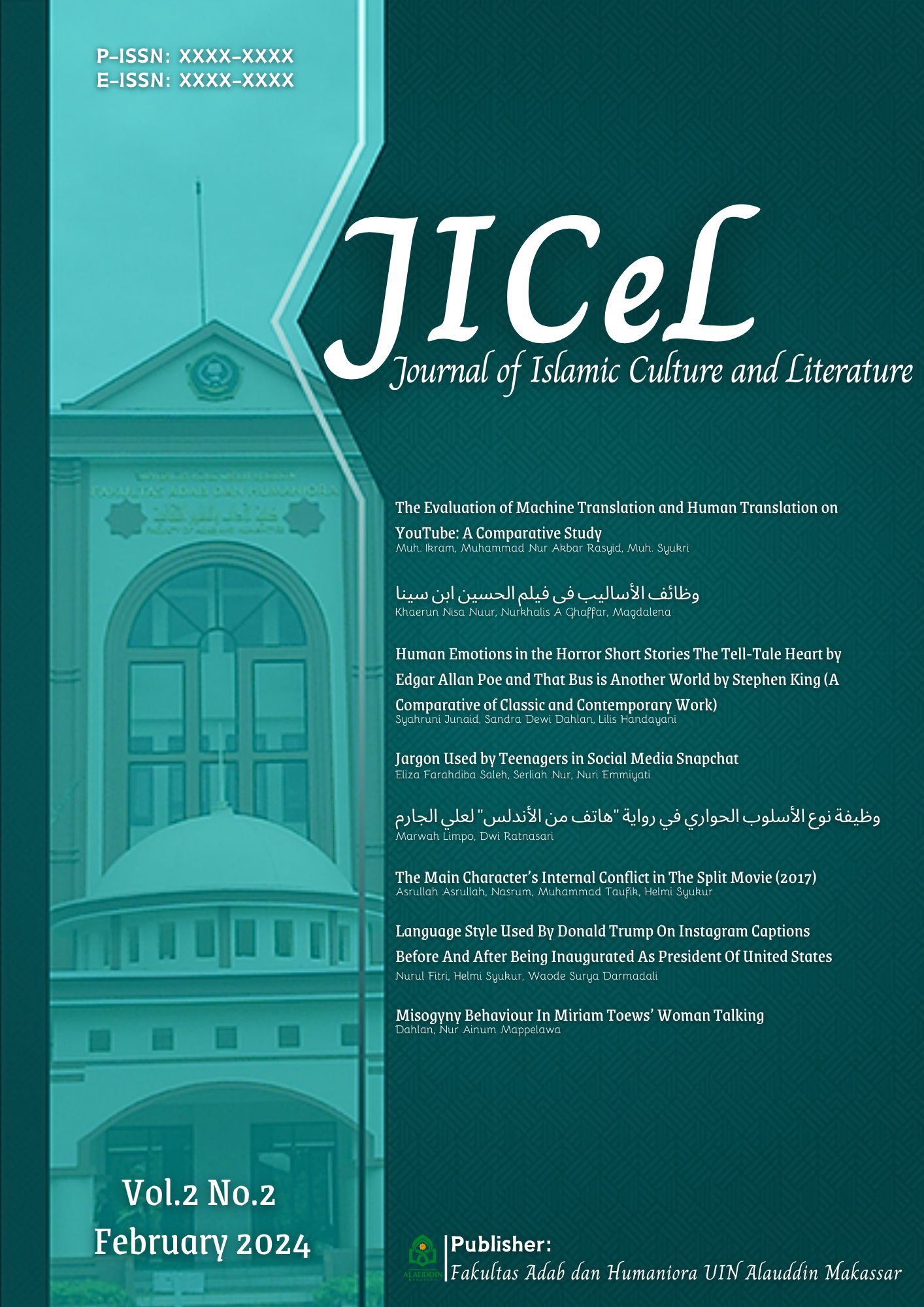Misogyny Behaviour in Miriam Toews’ Woman Talking
Abstrak
Stereotipe yang melekat dalam masyarakat dimana perempuan adalah makhluk kelas dua, dimana perempuan ditempatkan pada posisi yang tidak penting merupakan salah satu pemahaman yang masih memicu adanya misogini saat ini. Hal ini sejalan dengan topik utama novel Woman Talking karya Miriam Toews. Oleh karena itu, penelitian ini membahas tentang Bentuk Perilaku Misogini dalam Novel “Wanita Berbicara”. Tujuan dari penelitian ini adalah untuk mengetahui bentuk perilaku misogini dalam novel yang dirasakan oleh tokoh perempuan. Untuk menyajikan data fenomena yang akurat, peneliti mengumpulkan semua sumber yang berkaitan dengan objek material dan objek formal. Peneliti menggunakan permasalahan Misogini sebagai objek formal dan menggunakan novel “Woman Talking” karya Miriam Toews sebagai objek material. Peneliti menggunakan teori gender Michael Ryan untuk mengidentifikasi rumusan masalah. Dengan menggunakan metode penelitian Kualitatif, penelitian ini dapat memperoleh hasil bahwa Perilaku Mysoginy ditemukan melalui ketidakadilan gender yang dialami oleh sebagian perempuan Molostchna yaitu Subordinasi, Marginalisasi, Stereotip, Beban Kerja dan Kekerasan, khusus untuk jenis kekerasan ada 2 jenis yang ditampilkan yaitu pemerkosaan dan serangan fisik.
Penulis yang menerbitkan karya mereka dalam jurnal ini menyetujui ketentuan berikut:
-
Penulis tetap memegang hak cipta dan memberikan hak publikasi pertama kepada jurnal, dengan karya yang secara bersamaan dilisensikan melalui Creative Commons Attribution License. Lisensi ini memungkinkan orang lain untuk membagikan karya tersebut dengan syarat memberikan pengakuan atas kepenulisan serta publikasi awal dalam jurnal ini.
-
Penulis dapat membuat perjanjian kontraktual tambahan secara terpisah untuk distribusi non-eksklusif versi karya yang telah diterbitkan dalam jurnal ini (misalnya, mengunggahnya ke repositori institusional atau menerbitkannya dalam buku), dengan tetap mencantumkan pengakuan bahwa karya tersebut pertama kali dipublikasikan dalam jurnal ini.
-
Penulis diizinkan dan didorong untuk mengunggah karya mereka secara daring (misalnya, di repositori institusional atau situs web pribadi) sebelum dan selama proses pengajuan. Hal ini dapat mendorong pertukaran akademik yang produktif serta meningkatkan jumlah kutipan lebih awal dan lebih luas setelah karya diterbitkan (Lihat The Effect of Open Access).


